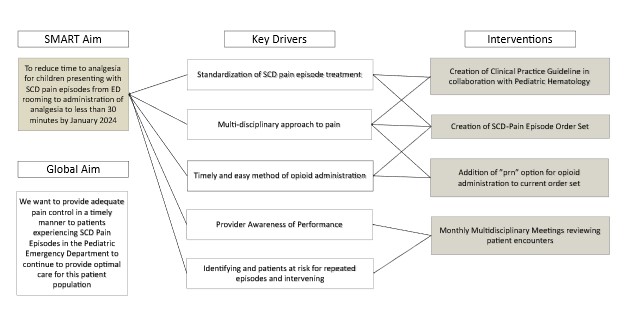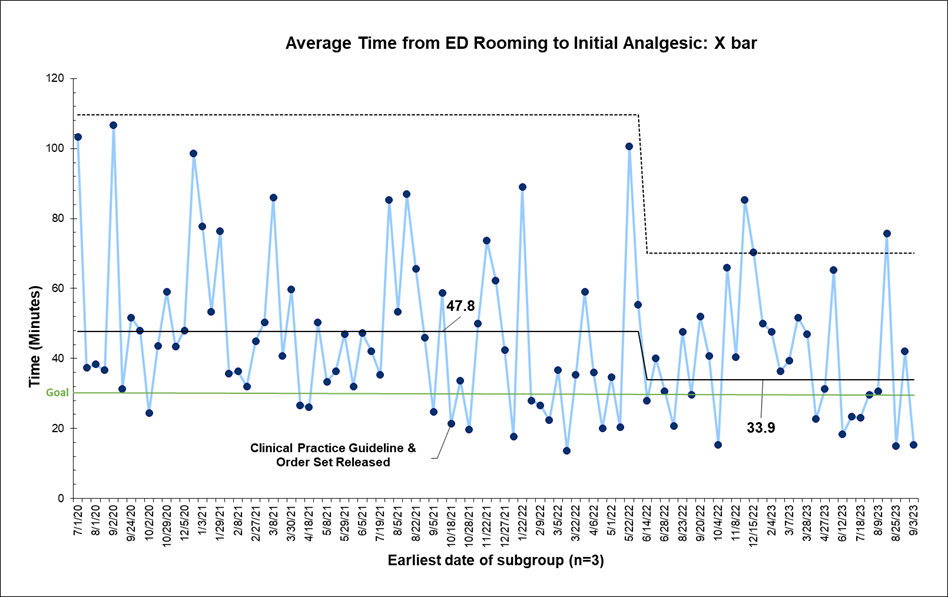Emergency Medicine
Session: Emergency Medicine 5: Sepsis
121 - Reducing Time to Analgesia for Sickle Cell Pain Episode Treatment in the Pediatric Emergency Department
Saturday, May 4, 2024
3:30 PM - 6:00 PM ET
Poster Number: 121
Publication Number: 121.1671
Publication Number: 121.1671

Amelia Wong, MD (she/her/hers)
Pediatric Emergency Medicine Fellow
Monroe Carell Jr. Children's Hospital at Vanderbilt
nashville, Tennessee, United States
Presenting Author(s)
Background: Pain episodes are the leading cause of hospital admissions for patients with sickle cell disease (SCD). Consensus guidelines recommend that the first dose of pain medication be provided within 30 minutes of arrival to the ED, with pain assessments every 20-30 minutes. Previous studies have found delays in the administration of initial analgesics.
Objective: To reduce time to analgesia for children presenting with SCD pain episodes from ED rooming to administration of analgesia to less than 30 minutes by January 2025.
Design/Methods: A multidisciplinary team developed a key driver diagram (Figure 1). Retrospective baseline data were obtained from July 2020 to August 2021, after which data were followed prospectively. The population included all children who presented to the ED with a diagnosis of SCD and reported pain. Children with SCD with fever were excluded. Data were extracted monthly from the electronic medical record. The primary outcome was the average time from ED rooming to analgesic administration. Statistical process control charts were used to analyze data. Nelson rules were utilized to detect special cause variation. Secondary measures included frequency of pain assessments in the first two hours and time to disposition. Process measures included order-set usage. Balancing measures included need for supplemental oxygen and naloxone.
Results: Of 286 total encounters, baseline data from 127 encounters revealed an average time from ED rooming to analgesia was 48 minutes. Following more consistent use of the order set, special cause variation was detected with a centerline shift to 34 minutes in June 2022 (Figure 2). The average number of pain assessments in the first two hours of arrival improved from 2.2 to 3.0. Time from arrival to disposition remained unchanged at 218 minutes, and there were no encounters requiring naloxone or supplemental oxygen.
Conclusion(s): Standardizing care with the creation of an order set reduced time to analgesia and increased the number of pain assessments. The team continues to address barriers to meet consensus guidelines with ongoing efforts focused on incorporating SCD clinic oral opioid plan into the ED treatment pathway.


